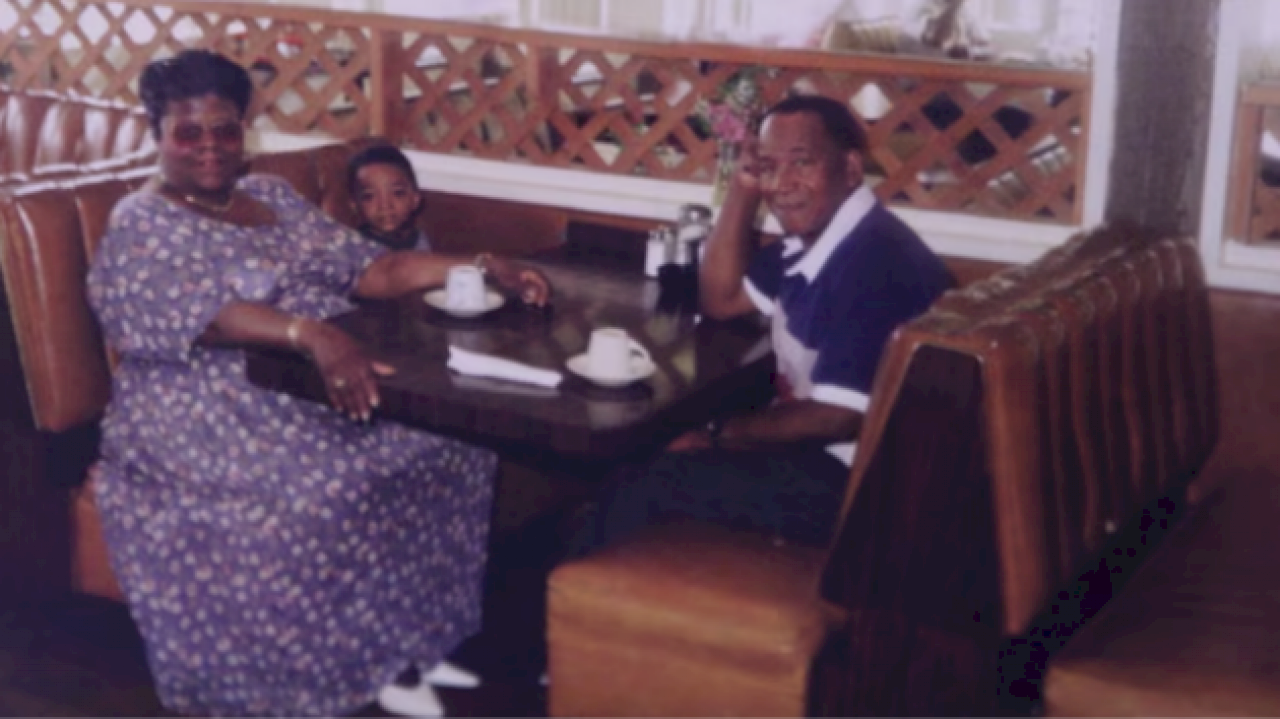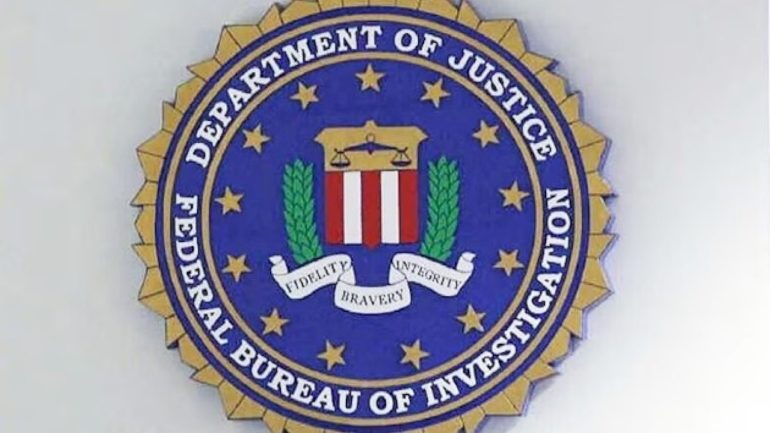Listeners:
Top listeners:
-
 play_arrow
play_arrow
94.3 Rev-FM The Rock of Texas | Where Texas Rocks
-
 play_arrow
play_arrow
99.1 The Buck Texas Country's Number 1 Country
-
 play_arrow
play_arrow
103.7 MikeFM Your Texas Hill Country Mix Tape
-
 play_arrow
play_arrow
KERV 1230 AM
-
 play_arrow
play_arrow
JAM Sports 1 JAM Broadcasting Sports 1
-
 play_arrow
play_arrow
JAM Sports 2 JAM Broadcasting Sports 2
Who is Jordan Neely, the man killed in NYC subway chokehold death?

(NEW YORK) — The contentious debate surrounding New York City’s struggle to address homelessness and mental illness has clouded the memory of who Jordan Neely was.
But to some who cared for him, Neely is remembered for breaking out into dance and singing along with the hits on the radio as a joyous child.
He’s remembered as a teen who struggled to cope with the loss of his best friend — his mother — who was violently murdered.
He’s remembered for entertaining commuters, tourists, and locals alike with moonwalks and side glides that rivaled Michael Jackson on the NYC subways.
Neely’s family had imagined a great future ahead for him: “I said, ‘Jordan, one day you might be famous,” Neely’s great aunt Mildred Mahazu told ABC News. “And he said, ‘Really, Aunt Mildred?'”
But by the age of 30, Neely was homeless and appeared to be experiencing a mental illness crisis when he was killed after a subway passenger named Daniel Penny held him in a six-minute-long chokehold, officials said.
Penny, a former Marine, was charged with second-degree manslaughter and criminally negligent homicide in Neely’s death. He pleaded not guilty, arguing that Neely had been threatening to passengers on the train. Other witnesses reportedly told police that Neely had been yelling and harassing passengers. Penny’s trial begins on Oct. 21 with jury selection.
Neely’s death sparked citywide protests, demanding answers about city resources after reports showed dozens of interactions between Neely and both police and homeless services in the years leading up to his death.
Two of Neely’s loved ones reflected on the life and death in interviews with ABC News ahead of Penny’s trial.
Neely’s life
Neely’s childhood was rocky, according to Mahazu. He and his mother, Christie Neely, were housing insecure — sometimes living in homeless shelters — and his mother’s tumultuous relationship with her boyfriend filled some days with arguments. But amid the instability, Neely’s relationship with his mother blossomed.
The two were inseparable. Everywhere Christie went, Neely followed: “You see one, you see the other,” Mahazu said.
Before heading off to school each morning, Neely would knock at his mother’s door, wake her up and tell her goodbye.
On April 3, 2007, then-14-year-old Neely tried to go about his routine and say goodbye to his mother before school, but her boyfriend, Shawn Southerland, had blocked him from entering their bedroom, according to local news outlet NJ.com.
It was later discovered that Christie had been violently murdered at the hands of now-convicted-murderer Southerland and he dumped her body in a suitcase on a Bronx parkway, according to local reports.
Mahazu believes the tragedy changed the trajectory of Neely’s life. He was a teen, heartbroken and unable to grasp the loss.
Mahazu said she would catch Neely sitting with a far-off look in his eye, sometimes rocking side to side. She’d ask him what was wrong and recalled him once saying, “I miss my mama. I want my mama.”
“They loved each other dearly. They were crazy about each other,” Mahazu said. “From there on, he started going down, down, down, because he and his mother were extremely close, very close,” Mahazu said.
In the years after her death, Neely found solace in his love of dancing and made the NYC MTA subway system his stage, busking for money as a Michael Jackson impersonator.
New Yorker Moses Harper first remembers meeting Neely in August 2009, when she followed the sound of Michael Jackson’s greatest hits in the halls of the Times Square subway station.
Harper, a Michael Jackson tribute artist herself, remembers finding Neely mid-performance, surrounded by a crowd of tourists clapping to the rhythm and following Neely’s encouragement to dance alongside him.
Neely spotted and called on Harper, who was watching from the back of the crowd: “Show me something. Come on. Don’t be scared,” Harper recalls that he yelled out to her. Armed with a single glove in her back pocket on her way home from her dance studio, she surprised Neely with Jackson moves of her own.
“When it was all over, I gave him his hat back and he hugged me. He’s like, ‘You got to teach me, you got to show me.’ And I did,” said Harper.
It was the beginning of a friendship that would last years: “We wouldn’t just talk about Michael Jackson and dancing. We talked about other things, you know, and I missed that. I missed that. That was my little brother.”
She remembers when Neely first told her about his mother: “What was the one person in the world that really got him. And I had never seen him that sad.”
During those years, it was hard for Mahazu to keep track of him riding through the subway system. But he’d come and visit her often, and she’d fix up a big country dinner, and they’d sit and talk over their meal.
Homelessness and mental illness in New York
One day, when Harper was riding the D train into the Bronx, she spotted Neely walking through the train cars. She recalled him looking noticeably homeless and asking for food or money.
She said his face lit up when he saw her, but he kept walking past, which Harper speculates was because of embarrassment. Harper said she stopped him, escorted him off the train, hugged him and asked him what was going on.
She bought him Chinese food, and something to drink, gave him cash and one of the shirts she had layered on.
“I said, ‘Listen to me: When you’re ready to get clean, this is where I am. Come and see me. I want you to come see me,'” she said. “It wasn’t what he needed at the time. And it just wasn’t. It just wasn’t enough. I don’t know. I don’t know.”
A community of Michael Jackson fans and tribute artists in NYC continued to search for Neely over the years after he stopped arriving at events and meetups. But local health officials and law enforcement said they knew him well.
According to police sources, Neely had a documented mental health history and had been previously arrested for several incidents, including assault, disorderly conduct and fare evasion.
The New York Times reported that Neely was on a list of the top 50 sheltered or homeless “high need individuals” to be reached by NYC outreach workers at the time of his death. According to New York Magazine, he bounced around shelters that have been criticized for their poor conditions and had also been hospitalized several times.
The Department of Social Services, the New York City Department of Health & Mental Hygiene and the NYPD declined to comment further on Neely’s case and why the efforts to contact or address Neely’s needs did not work.
Those who knew Neely have demanded answers.
“If you had had the background that Jordan nearly had, how would you fare in life? Where would you be? Where would your mental state be if you had the same kind of struggles that he had?” Harper said. “How would you be doing right now? Do you think that you would deserve the same? The same treatment that he received on the last day of his life? “
The Adams administration criticized “the system” Jordan went through: “That was a real textbook case of how if you ignore the problem over and over and over again, it could turn out to be a tragic outcome.”
Adams condemned Neely’s killing in the days following the death: “Jordan Neely did not deserve to die,” Adams said in prepared remarks amid growing calls for Penny’s arrest. He was not immediately arrested following Neely’s death.
“Jordan Neely’s life mattered. He was suffering from severe mental illness, but that was not the cause of his death. His death is a tragedy that never should have happened,” the mayor said, referring to Neely as “a Black man like me.”
In recent years, homelessness in New York City has reached the highest levels since the Great Depression, according to city officials.
Neely’s death took place following an announcement from New York City Mayor Eric Adams that individuals who appear “to be mentally ill” and “a danger to themselves” may be taken into custody involuntarily for psychiatric evaluations if they may be of harm, even if they are not considered to be an imminent threat to the public. The city has yet to release data about the outcomes of these programs and their effectiveness.
However, in a recent Department of Homeless Services announcement, city officials say 7,800 New Yorkers have been connected to shelter and 640 of them have been connected to permanent affordable housing since the city began an intensified approach to homelessness.
“They failed Jordan, they fail so many of the vulnerable members of a vulnerable population,” said Harper, calling for systemic reforms to fix the criminal justice and health care systems.
Copyright © 2024, ABC Audio. All rights reserved.
Written by: ABC News
Similar posts
-
Top popular

Ingram man charged with murder after fatal shooting

Kerr Crime Stoppers offering reward up to $5,000 for information in last week’s non-viable school threat

KISD asks parents to communicate with children about words and actions after ‘copy cat’ threat note found at middle school

City of Kerrville Parks and Recreation reminds citizens that a Red Flag Warning is in effect until further notice

City of Kerrville says that May 7 General and Special Elections will proceed



